MSI Z97 Gaming 5 Motherboard Review: Five is Alive
by Ian Cutress on October 6, 2014 10:00 AM EST- Posted in
- Motherboards
- Intel
- MSI
- Z97
CPU Benchmarks
Readers of our motherboard review section will have noted the trend in modern motherboards to implement a form of MultiCore Enhancement / Acceleration / Turbo (read our report here) on their motherboards. This does several things, including better benchmark results at stock settings (not entirely needed if overclocking is an end-user goal) at the expense of heat and temperature. It also gives in essence an automatic overclock which may be against what the user wants. Our testing methodology is ‘out-of-the-box’, with the latest public BIOS installed and XMP enabled, and thus subject to the whims of this feature. It is ultimately up to the motherboard manufacturer to take this risk – and manufacturers taking risks in the setup is something they do on every product (think C-state settings, USB priority, DPC Latency / monitoring priority, memory subtimings at JEDEC). Processor speed change is part of that risk, and ultimately if no overclocking is planned, some motherboards will affect how fast that shiny new processor goes and can be an important factor in the system build.
The MSI Z97 Gaming 5 implements an aggressive form of MultiCore Turbo, giving the CPU a boost during multithreaded loads.
Point Calculations – 3D Movement Algorithm Test: link
3DPM is a self-penned benchmark, taking basic 3D movement algorithms used in Brownian Motion simulations and testing them for speed. High floating point performance, MHz and IPC wins in the single thread version, whereas the multithread version has to handle the threads and loves more cores.


Compression – WinRAR 5.0.1: link
Our WinRAR test from 2013 is updated to the latest version of WinRAR at the start of 2014. We compress a set of 2867 files across 320 folders totaling 1.52 GB in size – 95% of these files are small typical website files, and the rest (90% of the size) are small 30 second 720p videos.
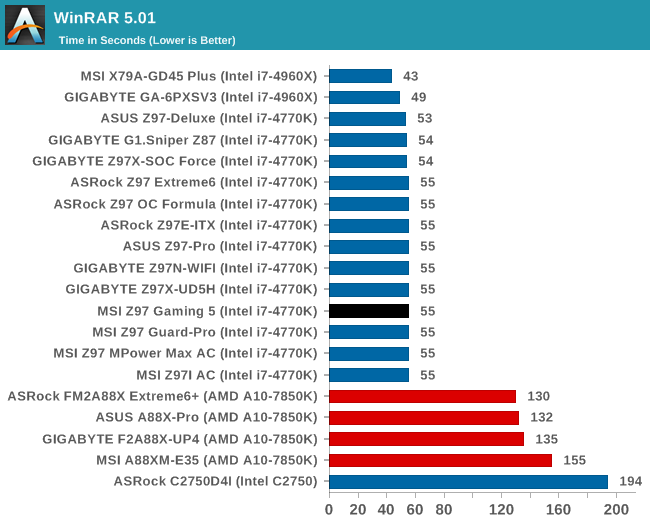
Image Manipulation – FastStone Image Viewer 4.9: link
Similarly to WinRAR, the FastStone test us updated for 2014 to the latest version. FastStone is the program I use to perform quick or bulk actions on images, such as resizing, adjusting for color and cropping. In our test we take a series of 170 images in various sizes and formats and convert them all into 640x480 .gif files, maintaining the aspect ratio. FastStone does not use multithreading for this test, and thus single threaded performance is often the winner.
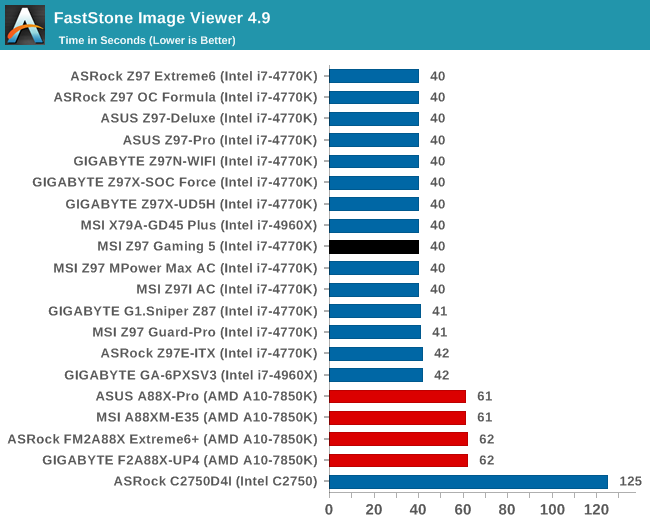
Video Conversion – Handbrake v0.9.9: link
Handbrake is a media conversion tool that was initially designed to help DVD ISOs and Video CDs into more common video formats. The principle today is still the same, primarily as an output for H.264 + AAC/MP3 audio within an MKV container. In our test we use the same videos as in the Xilisoft test, and results are given in frames per second.
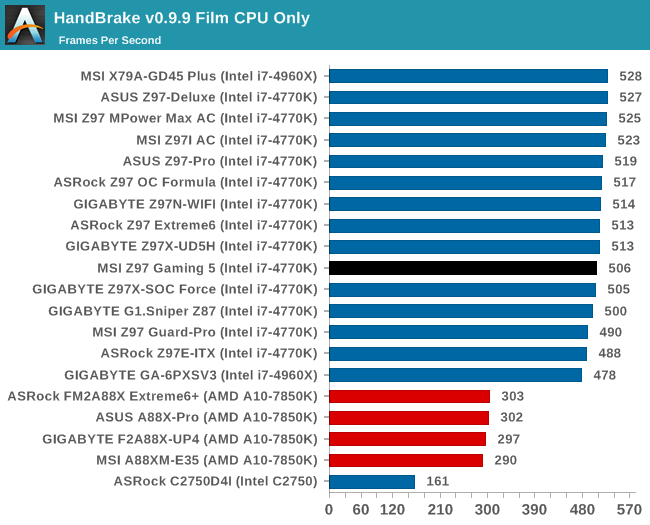

Rendering – PovRay 3.7: link
The Persistence of Vision RayTracer, or PovRay, is a freeware package for as the name suggests, ray tracing. It is a pure renderer, rather than modeling software, but the latest beta version contains a handy benchmark for stressing all processing threads on a platform. We have been using this test in motherboard reviews to test memory stability at various CPU speeds to good effect – if it passes the test, the IMC in the CPU is stable for a given CPU speed. As a CPU test, it runs for approximately 2-3 minutes on high end platforms.
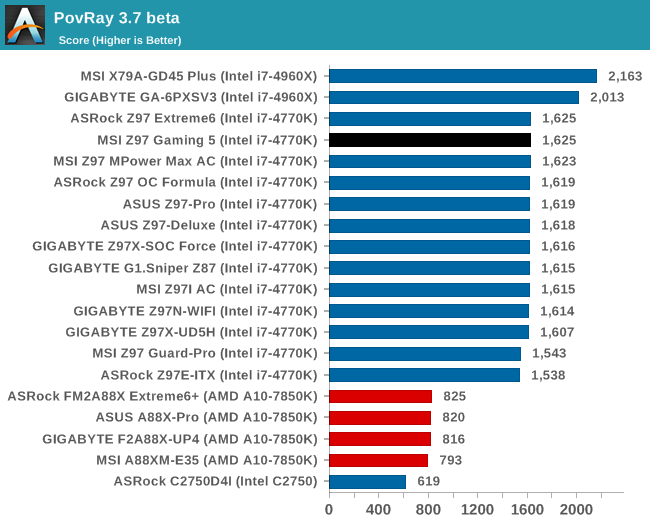
Synthetic – 7-Zip 9.2: link
As an open source compression tool, 7-Zip is a popular tool for making sets of files easier to handle and transfer. The software offers up its own benchmark, to which we report the result.
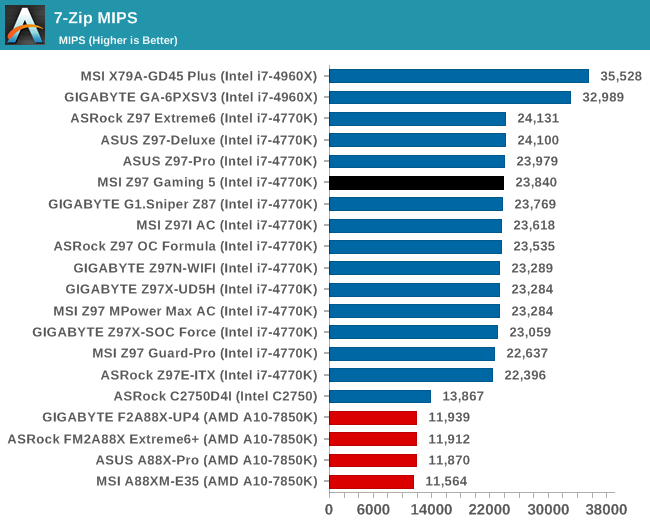


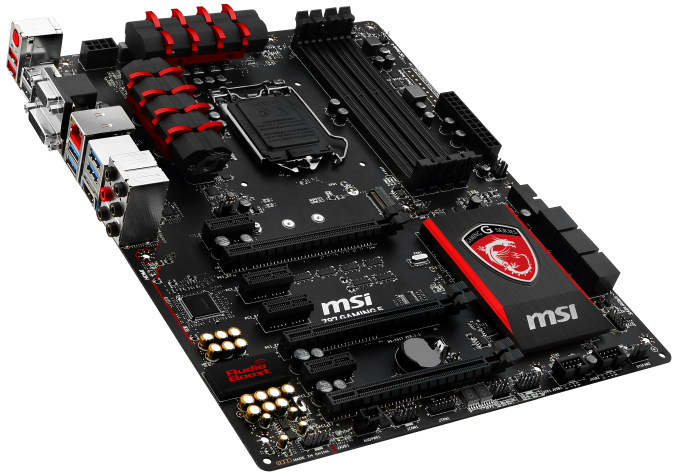








45 Comments
View All Comments
gw74 - Monday, October 6, 2014 - link
also, who said anything about "mainstream"? anandtech is a website written by enthusiasts for enthusiasts, and noobs interested in future-proofing like me. your point is?Salvor - Monday, October 6, 2014 - link
While I am definitely an enthusiast, I'm also not rich, and could never justify wasting money on the x99 chipset. At this point DDR4 is still to expensive to make sense unless you have money to throw away.ruggia - Monday, October 6, 2014 - link
well, you asked why would someone want it instead of DDR4.So he replied: mainstream
Did you meant to say why would an enthusiast want it?
Teizo - Tuesday, October 7, 2014 - link
Enthusiast means educated. It doesn't necessarily mean wasting money on unnecessary parts.gw74 - Tuesday, October 7, 2014 - link
(a) There will be a time when DDR4 will be essential and value for money. that is not today. (b) There will be a time quite soon when DDR4 is more common and slightly cheaper than now but still not strictly necessary for today's games, but buying it will be cheaper than buying DDR3 now and replacing with DDR4 later. the rational buyer would buy at that point. My question is will that point ever come and when do you think it will come?Nite Owl - Monday, August 24, 2015 - link
I thought an enthusiast was some one that was enthusiastic about cool new stuff and likes to build. No where in "enthusiast" does it say you have to pay loads of money and get ripped off on bran spanking new tech. your 3k tower is going to cost me 1500 next year! Mean while my setting are just as high as yours and well above 30fps... lol @ suckers! =PC'DaleRider - Tuesday, October 7, 2014 - link
LOL at the future proof comment. The ONLY way to future proof yourself in computers is not to spend your money.gw74 - Tuesday, October 7, 2014 - link
it's not binary choice of futureproof or not futureproof. better futureproofing. parts which will play newest games at highest settings per dollar without needing replacement for longest time. perhaps futureproof is the wrong word. how about "maximum longevity per dollar". bootable PCIE SSD, DDR4, 1440p, 802.11ax, CPU pipeline, GPU pipeline, and choose when to buy based on release dates/cost curve of these.spidey81 - Tuesday, October 7, 2014 - link
It's been proven time and again that the best way to "future proof" a gaming rig in particular is spend up on the GPU. With the current crop of Intel CPU's you're only seeing minor performance improvements in compute capability. I know plenty of people still using sandy bridge processors for gaming and multipurpose systems. Also, the biggest benefit from DDR4 will be for rendering, transcoding, onboard graphics, and the like. Games show little benefit from increased RAM speeds. PCIE gen 3 is the best interface we'll see for some time to come and x8 speed will be enough bandwidth for decent dual GPU setups. Anything more than that you'll be spending enough to justify an X99 platform.niceyuk - Saturday, November 1, 2014 - link
Theres no such thing as future proofing.